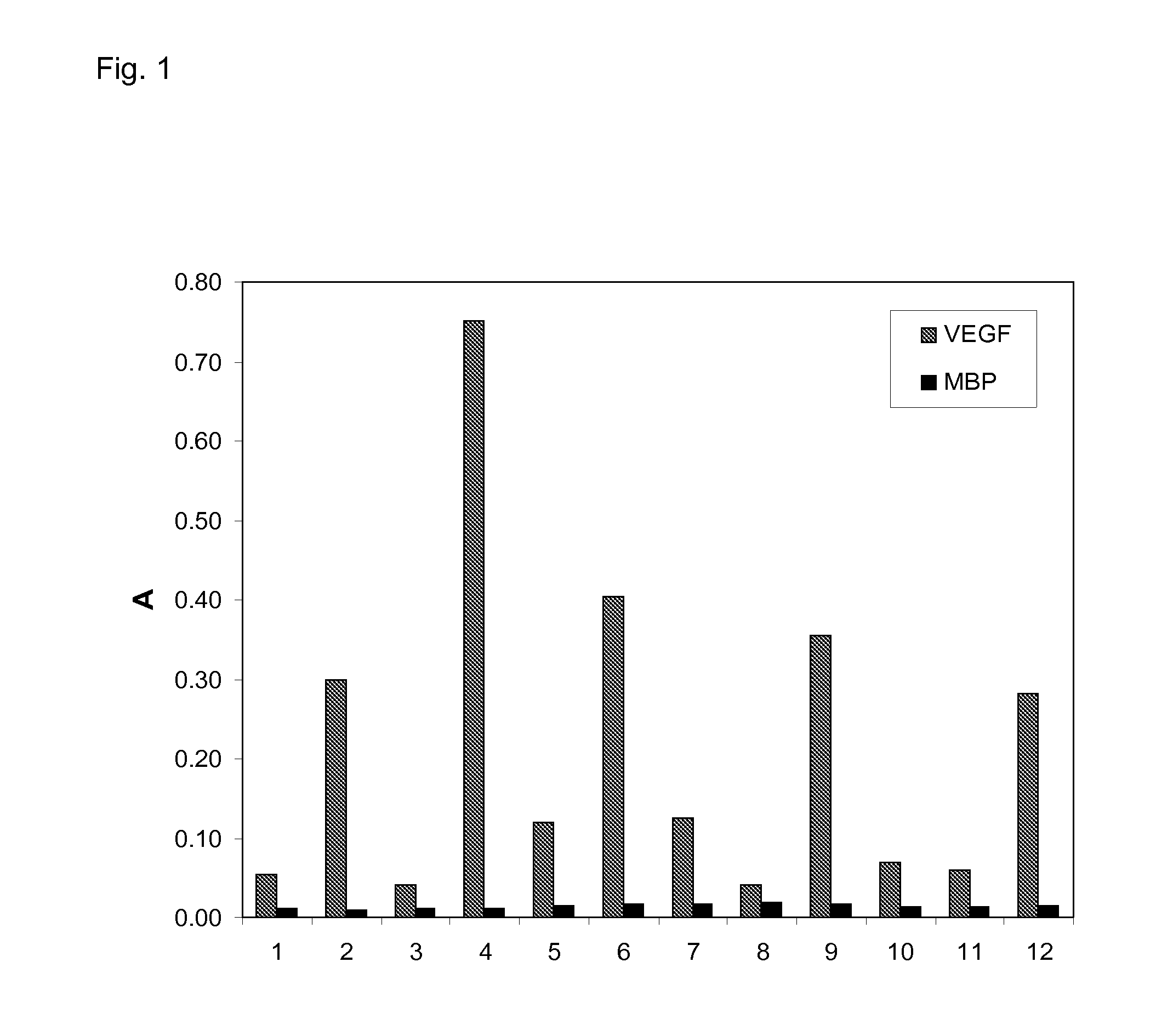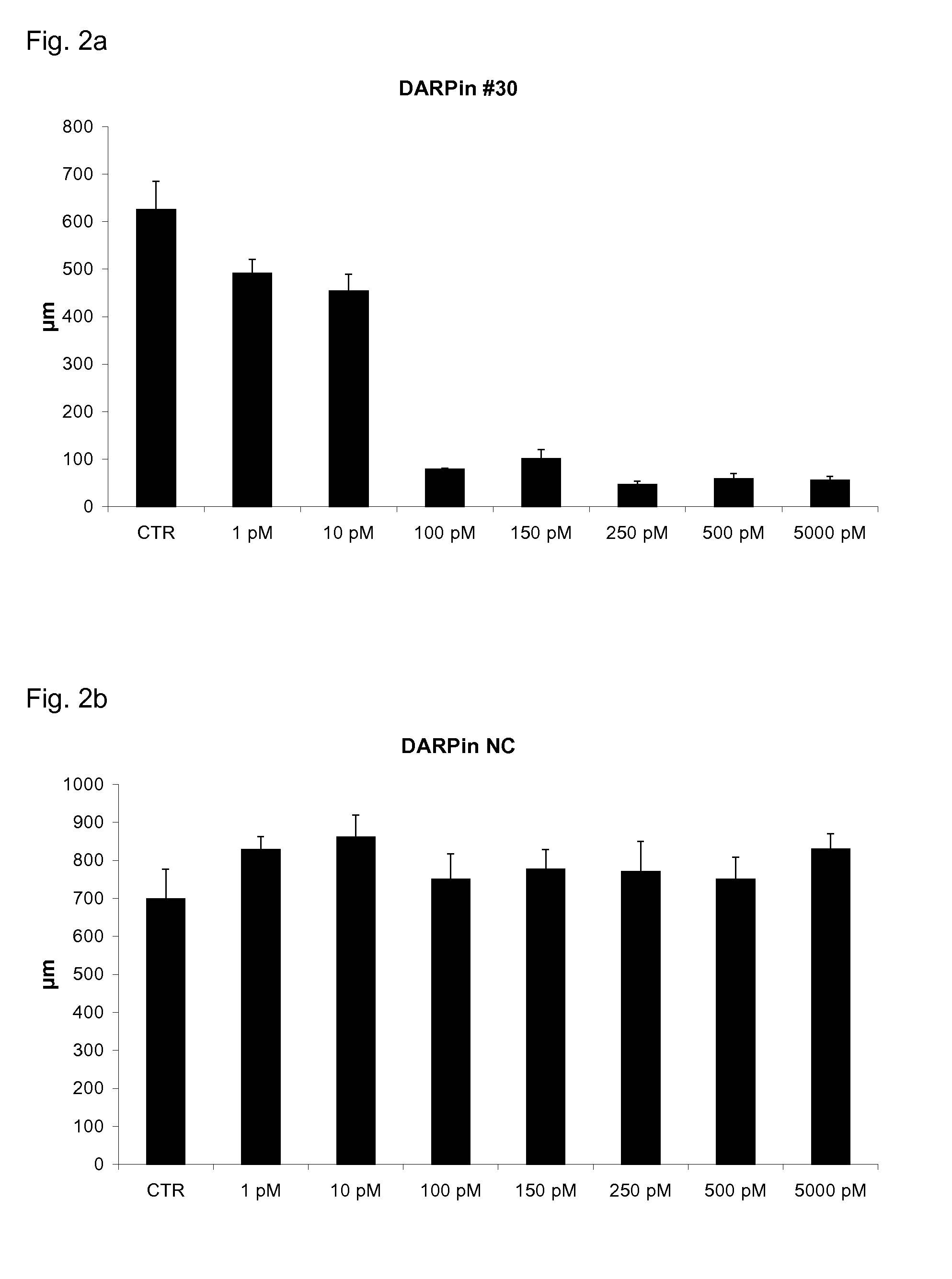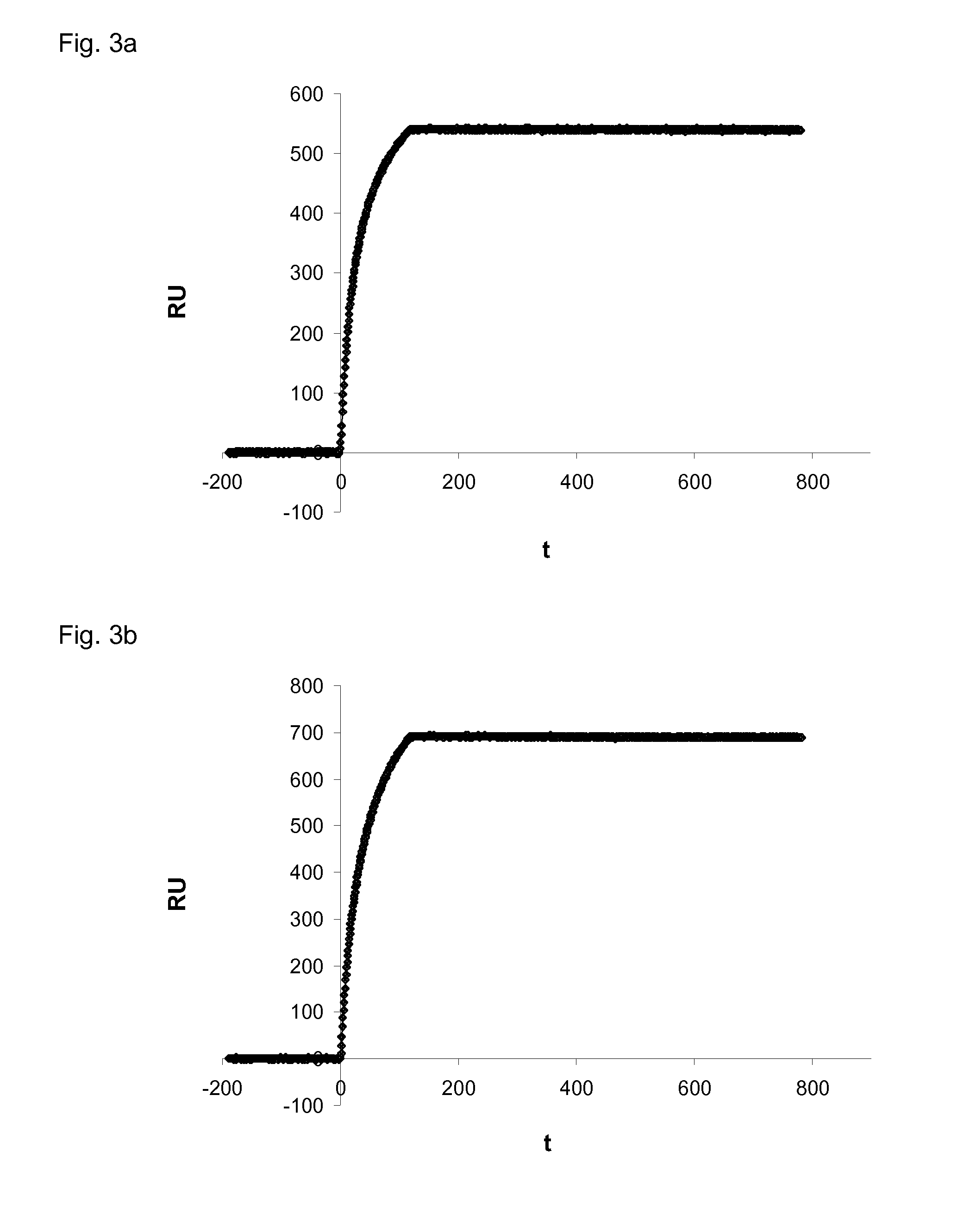Modified binding proteins inhibiting the vegf-a receptor interaction
a technology of vegf-a receptor and binding protein, which is applied in the direction of peptide/protein ingredients, drug compositions, peptide sources, etc., can solve the problems of complex therapeutic benefits associated with vegf-a targeted therapy, ineffective treatment of vegf-a with currently available therapeutics, and cytotoxicity and dose-limiting side effects, etc., to inhibit vegf-axxx binding
- Summary
- Abstract
- Description
- Claims
- Application Information
AI Technical Summary
Benefits of technology
Problems solved by technology
Method used
Image
Examples
example 1
Selection of Binding Proteins Comprising a Repeat Domain with Binding Specificity for VEGF-Axxx
[0126]Using ribosome display (Hanes, J. and Plückthun, A., PNAS 94, 4937-42, 1997) many designed ankyrin repeat proteins (DARPins) with binding specificity for VEGF-Axxx were selected from the N2C or N3C DARPin libraries described by Binz et al. 2004 (loc. cit.). The binding of the selected clones toward specific (VEGF-Axxx) and unspecific (MBP, E. coli maltose binding protein) targets was assessed by crude extract ELISA indicating that VEGF-Axxx binding proteins were successfully selected (FIG. 1). The repeat domains of SEQ ID NO:1 to 7 constitute amino acid sequences of selected binding proteins comprising a repeat domain with binding specificity for VEGF-Axxx. Sequence analysis of selected binders revealed specific ankyrin repeat sequence motifs inherent to certain selected families of binders.
[0127]Selection of VEGF-Axxx Specific Ankyrin Repeat Proteins by Ribosome Display
[0128]The sel...
example 2
Determination of IC50 Values of Selected DARPins with Binding Specificity to VEGF-Axxx in a Spheroid Outgrowth Assay
[0136]Addition of VEGF-Axxx to HUVEC spheroids embedded in collagen matrices leads to spheroid sprouting. Addition of an inhibitor of VEGF-Axxx will block sprout formation, which can be quantified statistically by the numbers and lengths of sprouts. By adding different concentration of inhibitor and a constant amount of VEGF, the IC50 can be determined.
[0137]Inhibition of Spheroid Sprouting by VEGF-Axxx Specific DARPins
[0138]Spheroid outgrowth assays were done according to standard protocols (Korff et al., loc. cit.). DARPins with specificity for VEGF-Axxx were selected and purified to >96% purity as described in Example 1. Human umbilical vein cells were grown to confluency in monolayer culture. After trypsinization, the cell suspension was placed in a hanging drop to form spheroids, i.e. approximately 500 organized aggregated HUVECs. Spheroids were embedded in a coll...
example 3
Determination of the Target Specificity of DARPin #27 in Comparison to Avastin® by Surface Plasmon Resonance Analysis
[0140]Dog VEGF-A164 or Dog VEGF-A164b were immobilized in a flow cell and the interaction of DARPin #27 (the repeat domain of SEQ ID NO:1, corresponding to amino acids 1 to 159) and Avastin® with the immobilized targets were analyzed.
[0141]Surface Plasmon Resonance (SPR) Analysis
[0142]SPR was measured using a ProteOn instrument (BioRad). The running buffer was 20 mM HEPES, pH 7.4, 150 mM NaCl and 0.005% Tween 20. About 1200 RU of dog VEGF-A164 or dog VEGF-A164b were immobilized on a GLC chip (BioRad). The interactions were measured at a flow of 60 μl / min with 5 min buffer flow, 100 seconds injection of Avastin® or DARPin #27 at a concentration of 250 nM and an off-rate measurement of a few minutes with buffer flow. The signal of an uncoated reference cell was subtracted from the measurements.
[0143]The results are shown in FIG. 3a (Avastin interaction with dog VEGF-A16...
PUM
| Property | Measurement | Unit |
|---|---|---|
| Molar density | aaaaa | aaaaa |
| Molar density | aaaaa | aaaaa |
| Atomic weight | aaaaa | aaaaa |
Abstract
Description
Claims
Application Information
 Login to View More
Login to View More - R&D
- Intellectual Property
- Life Sciences
- Materials
- Tech Scout
- Unparalleled Data Quality
- Higher Quality Content
- 60% Fewer Hallucinations
Browse by: Latest US Patents, China's latest patents, Technical Efficacy Thesaurus, Application Domain, Technology Topic, Popular Technical Reports.
© 2025 PatSnap. All rights reserved.Legal|Privacy policy|Modern Slavery Act Transparency Statement|Sitemap|About US| Contact US: help@patsnap.com



